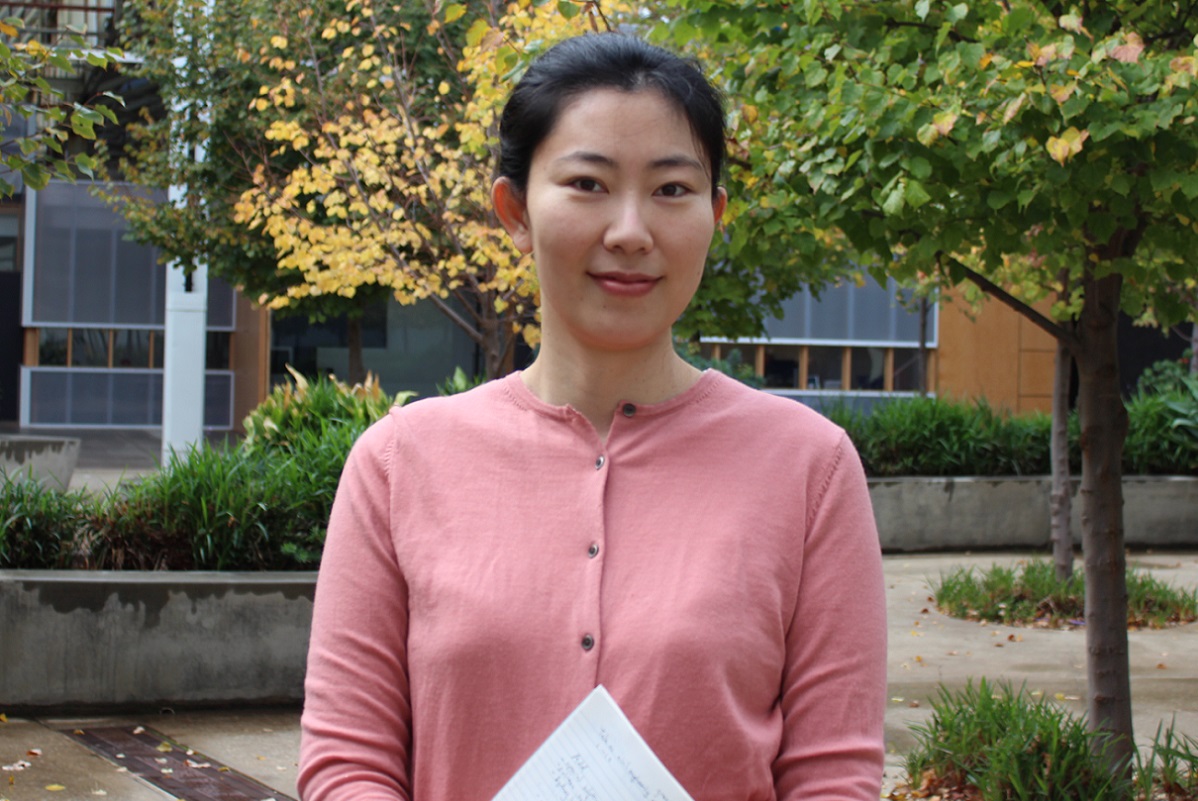
International Women in Mathematics Day on 12 May celebrates women in maths and aims to inspire others towards maths journeys.
Introducing Dr Yang Shi, senior lecturer in maths at Flinders University.
From the way ocean waves propagate in shallow water, light travels in optical fibre, or coronavirus spread is modelled, Dr Shi loves the way her area of mathematics uses symmetry and simplicity to manage complex systems.
What inspired you to study maths at tertiary level?
Maths was one of the easier subjects for me at high school. I decided to do a general science degree which allowed me to study a range of subjects and I started with mathematics, physics, chemistry, and French (I like French cakes), and ended up focusing on mathematics and physics by third year.
How did you progress to your specialist area?
I did my honours in high energy physics, working on a project on a detector in the Large Hadron Collider at CERN, the European Organization for Nuclear Research.
I was given the advice by a physics professor to learn as much maths as possible to be better at physics, so I went on to do a PhD in mathematical physics. It was a joint degree between the university of Sydney and Sorbonne Paris VI university, which meant spending a couple of months every year in Paris. (French cakes!)
What most excites you about your work at Flinders?
We have a close-knit group at Flinders University. Everyone helps each other whether teaching, admin, or other stuff. It is nice.
I was given a start-up grant when I commenced that enabled me to attend conferences to present my results, talk to colleagues in the field, and invite people to visit me to build collaborations. Adelaide is such a nice city, it is not hard to convince a colleague to visit! In fact, I think they liked the beach at Glenelg more than talking to me about maths.
I like the topics I teach and my students. I teach linear algebra and ordinary differential equations, one of the most useful tools you can learn for any areas of mathematical sciences. Many of my students will go on to be maths teachers so I am imparting my appreciation of mathematics to them, and from them to others.
How does your area apply to the real-world?
I study nonlinear differential and difference equations which underpin physical models and can be solved or ‘integrated’. They are known as ‘integrable systems’ and are equations that govern the way a system evolves with time; whether it is the way ocean waves propagate in shallow water, the way light travels in an optical fibre, or the way different states of a mechanical system can be counted, etc.
An example would be the modelling of spread of the coronavirus. The curve everyone’s talking about is a graphical presentation of a solution of a differential equation underlying some modelling of this situation. An Italian colleague (Prof Paolo Rossi) came to visit me this February and returned to the lockdown in the north of Italy. He gave a talk about modelling the infection using differential equations in his zoom lecture to 70 high schools in Italy and it has now had 30,000 views on You Tube.
I am interested in the symmetry of such systems as you only need to know a small piece of a large and seemingly complex system to derive everything there is to know about this system. Think of a kaleidoscope, the beautifully intricate patterns seem complicated, however there is nothing more than mirrors and some coloured beads.
Symmetry allows complex systems to be handled efficiently and elegantly. I like this area of mathematics because object fits nicely together, and simplicity guides the way I work though a problem. If it looks like a calculation is getting ugly or complicated, usually it means I have made a mistake somewhere!
What would you say to young people considering a career in maths?
People are different and are good at different things. You know what you like and what you are good at. Since hard work is required to be good at something, it is better to choose an area you enjoy.

